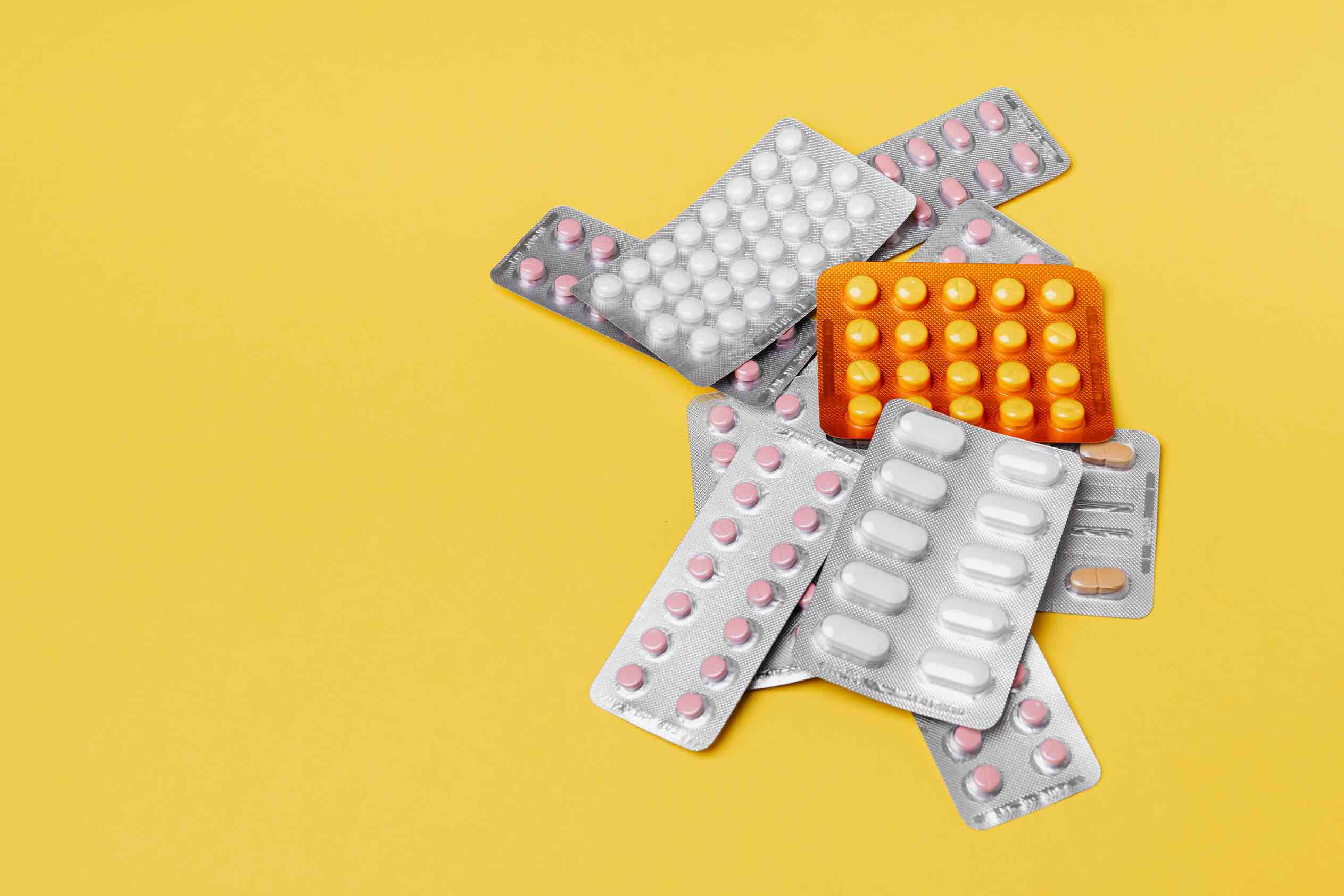Untangle the complex web of pharma supply chain and logistics

Ioana Neamt

The world runs on intricate supply chains — a global iteration of “connect-the-dots,” where the goal is to fulfill needs and dreams. Our dots are spread across vast networks that, while striving for a more efficient process and better delivery, drive the innovation of how we source and process raw materials, specialize storage and transportation, tailor and manage manufacturing, and more. One such example is the pharmaceutical industry, which relies on one of the most complex, delicate, and innovative supply chains to date.
How does the pharma supply chain work?
While not always perfect, the pharmaceutical supply chain is an impressively complex and interesting one. The journey of medication to our homes begins with the researchers and manufacturers who source the materials, then make and test the products, which are then acquired by distributors and make their way to the pharmacies where we purchase them either with or without a prescription. That is, of course, an oversimplification of the process. The chain breaks into more steps than that, which we can best understand by following the contributions of the key participants in the process.
Who are the key players in the pharma supply chain?
Essential participants in a production process are also sometimes referred to as “stakeholders,” a term that you might have come across already. In the pharmaceutical supply chain, the key players include:
- Raw material suppliers
- Drug manufacturers
- Regulatory agencies
- Wholesale distributors
- Pharmacy benefit managers
- Pharmacies

Raw material suppliers
Material suppliers provide the foundation on which drug discovery research can build treatments. Precision is paramount from common chemicals to complex biological components, so a good material supplier ensures proper quality control and adherence to regulations, like GMP and GLP, reliable sourcing from diverse options, and just-in-time delivery that aligns with the often-tight manufacturing schedules of the pharmaceutical industry.
Pharmaceutical manufacturers
Taking on the task of turning essential ingredients into medicine that can improve and even save lives, manufacturers are like the alchemists of the pharma supply chain. A good manufacturer should adhere to strict quality control measures and regulations, have thorough testing protocols, optimize manufacturing processes for efficiency and cost-effectiveness, and support innovation.
In pharma, manufacturers fall mainly into two categories:
- Brand name — These stakeholders take complex ownership of the process, from developing original drugs and conducting clinical trials, to marketing and promotion for their products.
- Contract manufacturing organizations (CMOs) — They specialize in large-scale production for other pharmaceutical companies and can offer great flexibility and expertise in manufacturing a wide range of medications.
Pharma stats
- Brand name pharmaceutical manufacturing industry is estimated to be around $261.2 billion¹ in the US in 2024.
- While the pharmaceutical CMO market size is only about $11.49 billion².
- The world’s biggest brand name pharmaceutical company is Johnson & Johnson, with a revenue of $85.2 billion³ in 2023
- In 20221, Americans spent $1,432 per capita⁴ on pharmaceuticals
Regulatory agencies
While not directly involved in the active and tangible aspects of the pharma supply chain, regulatory agencies play a crucial role in ensuring consistent quality and patient safety. For starters, agencies set the standards that all other supply chain stakeholders have to adhere to. They also establish guidelines and regulations for everything from research and development to manufacturing, distribution, and even marketing of medication.
Regulatory agencies are also responsible for overseeing compliance, promoting transparency, and adapting to the constantly evolving pharmaceutical landscape.
Wholesale distributors
Wholesale distributors build the bridge between manufacturers and pharmacies, ensuring that medications are stored and shipped safely and efficiently. Distributors usually make bulk purchases that go on to fulfill a variety of individual pharmacy orders. A good pharmaceutical distributor can handle a sophisticated inventory control system, build a reliable logistics network, and ensure specific storage and transport requirements.
Pharmacy benefit managers
Similarly to regulatory agencies, pharmacy benefit managers (PBMs) operate “behind the scenes.” Functioning as mediators between drug manufacturers, insurers, and pharmacies, PBMs work to control costs and ensure access to medication. Ideally, PBMs can leverage their bulk purchasing power to negotiate prices and rebates that can be passed on down the chain to the consumer. They collect and analyze data on meds utilization trends and costs for data reporting that can be used to identify potential areas for saving costs. Not least, PBMs can work to balance cost-effectiveness with patient needs when developing and maintaining lists of medications covered by the insurance plans they manage.
Pharmacies
The direct meeting point between the pharma supply chain and the consumer, pharmacies can be a combination of patient advocates, medication experts, and guardians of public health. They coordinate refills for multiple medications, ensure storage under the proper conditions, maintain tight inventory management of stock levels that meet patient needs while minimizing waste, and more.

What are the main pharma supply chain challenges?
Specialized processes tend to come with specialized obstacles. Most pharma supply chain challenges break down into the following categories of issues:
- Regulatory compliance — Any company operating in a highly regulated industry is required to comply with any and all guidelines and regulations established by competent agencies.
- Cold chain management — Maintaining a reliable “cold chain” is a major challenge of pharma supply chain warehousing logistics, as almost all types of drugs and medicine require very specific temperature-controlled conditions throughout both storage and transportation.
- Supply chain transparency — Inventory traceability is an essential element of ensuring patient safety and medication effectiveness. Transparency across the supply chain can help quickly identify potential cases of counterfeiting, expired drugs, or transit delays.
- Disruption readiness — Delays, power outages, and inadequate packaging issues are just a few examples of disruption that key players in the pharma supply chain need to anticipate and be prepared for. While the global scale of the supply chain offers undeniable advantages, it also makes for particular vulnerabilities. Things like geopolitical developments, natural disasters, or fluctuations in the availability of raw materials can have an almost immediate effect on the pharma supply chain.
- Cost management — Balancing the needs of innovation with the necessity of consumer affordability is a nearly constant challenge that reverberates across the chain. While the rigors of innovation and manufacturing leave no room for shortcuts, the end consumers cannot afford to absorb any level of costs
Get software that works with you
Test it yourself for free or book a demo with our team. Explore core features with your own data, no credit card required — or get a tailored walkthrough to see how Katana fits your workflows.
Examples of pharma supply chain best practices
In the pharmaceutical industry, adapting to emerging trends has a great deal more to do with ensuring safety and effectiveness than in other types of business. Adopting best practices (not to be confused with good manufacturing practices) allows pharmaceutical companies to create an efficient, transparent, and resilient supply chain that benefits patients worldwide.
- Embrace digital solutions — Implementing tools like enterprise resource planning (ERP) systems and cloud-based platforms can streamline communication, enhance transparency, and facilitate real-time tracking throughout the supply chain.
- Optimize inventory management — Stockouts and overstocking are costly problems in any industry, but in the pharma supply chain, they can affect many patient lives. Data analytics, forecasts, real-time inventory tracking and monitoring, and ensuring proper storage conditions help key players minimize waste while making sure medication is readily available when and where it is needed.
- Foster collaboration — Regulatory compliance and disruption readiness across the highly complex pharma supply chain requires collaboration between all the stakeholders along the process. Sharing information and aligning toward a common goal can make a big difference in building resilient networks and in response times to challenges.
- Ensure quality management — From raw materials to the finished product, quality standards across a pharma supply chain are non-negotiable. Best practices dictate that businesses implement robust quality control, perform regular audits, reduce the risk of human error, and tamper proof processes and products.
- Consider sustainability — The pharmaceutical industry has a significant impact on the environment. It is important to research and invest in sustainable and responsible practices, such as green manufacturing, optimizing transit routes, using recyclable packaging, and properly managing waste.
Take on pharma supply chain management challenges with Katana
Wherever your business is within the pharma supply chain, Katana should have a place on your toolbelt. Boasting a set of features that make following regulatory guidance a breeze, including:
- Finding optimal stock level with inventory planning
- Inventory control for streamlined stock management
- End-to-end traceability for regulatory compliance and recall readiness
- Monitoring stock across all your sales channels
- Integrate with other business tools you use
Besides all that, Katana has an intuitive user interface, so you don’t need to earn a degree in computer science before you can start using it. This means you can implement the system and get your team up to speed a lot quicker. Request a demo now to see Katana in action!
Pharma supply FAQs
This process typically moves through research and development to manufacturing, then packaging and labeling, distribution, and dispensing. Quality assurance is included every step of the way.
The pharmaceutical supply chain’s high complexity requires technological innovation to keep up. In fact, cloud-based software solutions and integrations, such as Katana, make it easy to track inventory and trace any item from its origin to the final point of sale.
Some of the most pressing risks across the pharma supply chain include counterfeit medications entering the process and making their way to consumers, cybersecurity vulnerabilities, raw material shortages, and cold chain failures.
Efficient and secure supply chains in the pharmaceutical industry translate to patient safety, safeguarding public health, nurturing a high level of trust in scientific innovation, and reducing costs.
Sources
¹Brand Name Pharmaceutical Manufacturing in the US – Market Size, Industry Analysis, Trends and Forecasts (2024-2029), IBISWorld (2024)
²U.S. Biopharmaceutical CMO & CRO Market Size, Share & Growth Report, 2033, BioSpace (2024)
³The world’s biggest pharmaceutical companies: Top ten by revenue, Pharmaceutical Technology (2024)
⁴Pharmaceutical spending per capita in selected countries in 2022, Statista (2024)

Ioana Neamt
Table of contents
Get inventory trends, news, and tips every month
Get visibility over your sales and stock
Wave goodbye to uncertainty with Katana Cloud Inventory — AI-powered for total inventory control